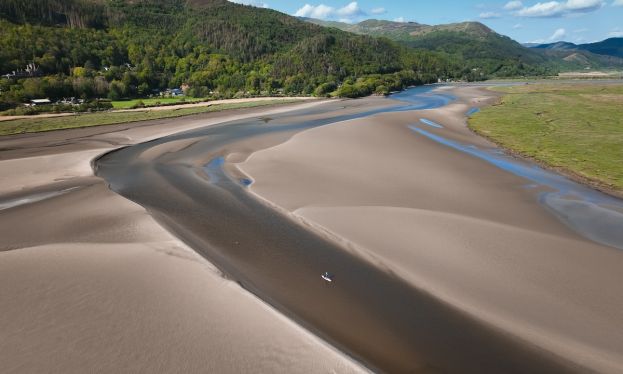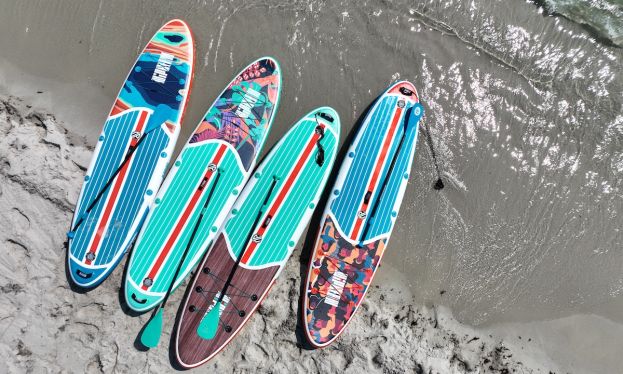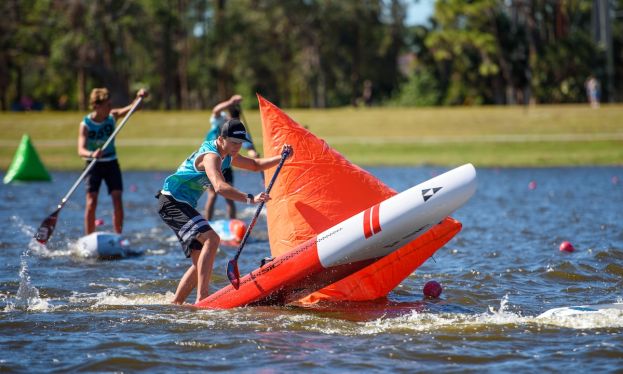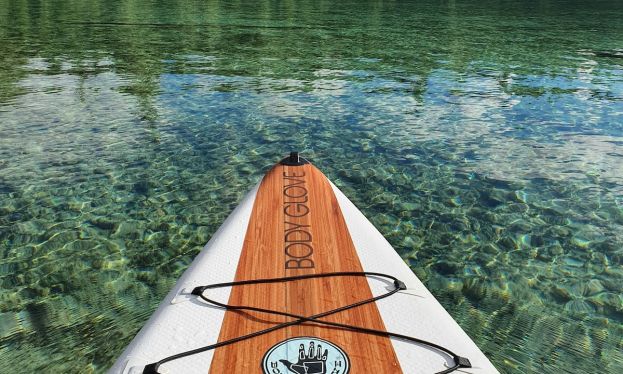How To Choose Your First SUP
- Written by Layne Pennell
- Published in Tips
- Comments::DISQUS_COMMENTS
ALBERTA, Canada - Buying your first paddle board can be a challenge. Stand up paddle boards (SUP) aren’t cheap, and a first time buyer can quickly be overwhelmed by all of the options and variations that exist in the market place. Inflatable or hard board? What size should you get? Hull shape? Length? Materials? Price? The stuff one needs to learn seems to go on forever. Answering these basic questions will help you get the SUP that’s right for you.
Inflatable or Hardboard?
Should you get an inflatable SUP or hardboard? Inflatable paddle boards are less expensive but there is more to consider than price...
 Pictured left: Pop Board Co Inflatable / Pictured right: Surftech Generator Composite
Pictured left: Pop Board Co Inflatable / Pictured right: Surftech Generator Composite
- Inflatable boards all strive to be as stiff as a hardboard. The stiffer the board, the easier it flows through the water. Stiffness also permits better energy transfer from the paddler to the water which increases efficiency.
- Hardboards usually have better balance than inflatables. Many of my SUP students have told me that they found learning on a hardboard was much easier than when they previously took lessons on an inflatable.
- Inflatable paddle boards are also prone to puncture. That’s why they come with a repair kit.
- The advantages of inflatable SUPs are price and storage. They are less expensive than hardboards and they can be stored in a large duffel bag if you have limited space or live in a tower.
What Size Should You Get?
 Be sure to choose a board that is right for your skill level and body type, there are tons of options out there!
Be sure to choose a board that is right for your skill level and body type, there are tons of options out there!
Forget that 8’ board that looks wicked in the surf shop. If you are a first time buyer and weigh more than 100 lbs, that is way too small of a board for you. Remember this rule: The smaller the board, the less stable it is. You first board should be a good all around board. You will have it for years, and it will be great for friends and family to use when you move onto other boards.
- 10’ – 10’6” length boards are great for novice and intermediate riders up to 200 lbs. Boards this length tend to have a displacement of 170-190 Liters, and will be very stable for people in this weight class. Heavier people can ride this board, but it will be less stable.
- 11’ – 11’6” length boards are great for novice and intermediate riders up to 220-230lbs. Boards this length tend to have a displacement of 205-225 Liters, and will be very stable for people in this weight class. Heavier people can ride this board, but it will be less stable.
- If you are a novice rider, and weigh more than 250 lbs, you don’t necessarily need a longer board; you just need one with more displacement. Look for one that is wider than the standard 32” width.
Materials?
 Carbon fiber is currently the strongest and lightest material on the market for board construction. | Photo via: NSP Surfboards / Erik Aeder
Carbon fiber is currently the strongest and lightest material on the market for board construction. | Photo via: NSP Surfboards / Erik Aeder
Materials and construction method is what really determine the price of a stand up paddleboard. Better materials make a SUP stronger and lighter. A light board might not matter when you are renting from the beach and they guy carries it to the waterline for you, but when you are walking a few blocks from the parking lot to the beach, it makes a difference.
- Carbon Fiber: This is currently the strongest and lightest material on the market. However, there is a hefty price to pay for this technology. Prices of $2500+ are not uncommon.
- Bamboo and Fiberglass: While bamboo is not as strong as carbon fiber, it comes pretty damn close, and boards made with real bamboo are stronger and lighter than boards made simply with fiberglass.
- Fiberglass: Most stand up paddleboards in the market are made from fiberglass. Glass layers from 1-4 layers of glass depending on the brand, and quality varies from cheap to very good.
- Polyurethane: Strong and tough, boards made from this material can take a pretty good beating. However, they tend to be very heavy compared to carbon, bamboo and fiberglass boards.
- PVC: What inflatable paddleboards are made from.
Price?
Only you can determine how much you can afford to pay. If you love paddle boarding and you are dying to get your own board, but your budget is limited, get an inflatable. If you need the best of the best, get a carbon fiber SUP. Otherwise, look for the lightest and best constructed board you can afford with the best materials possible.

When shopping for your first stand up paddle board, ask yourself the four basic questions, do your research and then look for the best SUP that meets what you want in a board. It's also EXTREMELY important that you consider your safety and the safety of others when out on the water. A leash and life jacket are always key items to have when you're paddle boarding so make sure that with your new purchase you also invest in your safety.
To see more SUP Tips for Beginners, click HERE.

Layne Pennell
Layne Pennell has been stand up paddle boarding for 10+ years and loves all aspects of the sport. After paddling daily while living in Mexico for several years, he returned to Alberta, Canada and brought his passion for SUP with him. Layne teaches paddle boarding to beginners, and his company Wappa Paddle Boards builds environmentally friendly bamboo stand up paddle boards.
Website: www.wappapaddleboards.com/ Email This email address is being protected from spambots. You need JavaScript enabled to view it.





